Beekeeping is an interesting and rewarding hobby, but it can be dangerous if you don’t follow the right safety protocols. One of the most important things to know about beekeeping is how to handle a bee’s stinger in order to avoid injury. In this article, we’ll explore the basics of bee stings and how to handle them safely. We’ll also look at the best ways to avoid a bee sting altogether. By the end, you’ll be well-equipped to manage any potential stings and keep your beekeeping experience safe.
What is a Bee Sting?
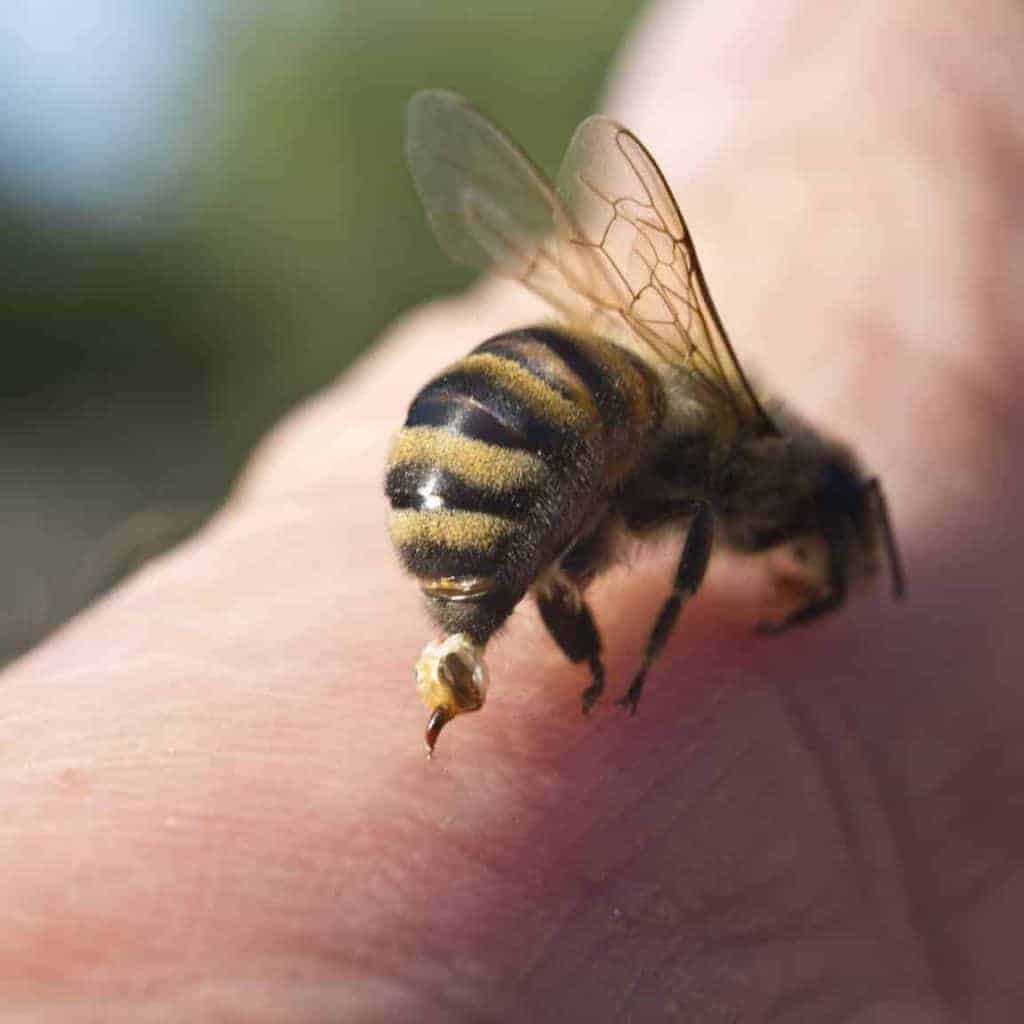
A bee sting is a wound caused by the stinger of a bee, which is a sharp, pointed organ attached to the bee that injects venom when used to sting. It is estimated that each year, more than 500,000 people are stung by bees in the United States alone.
Bee stings can be extremely painful and cause severe allergic reactions in some individuals. To avoid injury, it is important to understand what a bee sting is and which bees leave stingers behind.
- Bee Stingers: Stingers are found on female bees, such as honey bees and bumblebees, and male bees, such as carpenter bees. The stingers are located at the end of the abdomen and are used to defend the bee’s hive and protect the bee’s young.
- Bee Venom: The venom produced by a bee sting is composed of several different compounds, including histamine, serotonin, and acetylcholine. The venom is injected into the skin when the bee stings and causes an inflammatory reaction, resulting in pain, redness, and swelling.
- Toxic Components: Most bee stings contain two toxic components, melittin and phospholipase A2. These compounds can cause an allergic reaction, which can range from mild to life-threatening.
- Bee Sting Treatment: The treatment for bee stings depends on the severity of the reaction. Most reactions can be treated with over-the-counter medications, including antihistamines and analgesics. For severe reactions, it is important to seek medical attention immediately.
Bee stings can be avoided by wearing protective clothing when handling bees and by avoiding areas where bees are known to congregate. Beekeepers should also take steps to reduce the risk of being stung by using protective gear when handling bees and by removing any nests or hives that may be located near their property.
Types of Bees
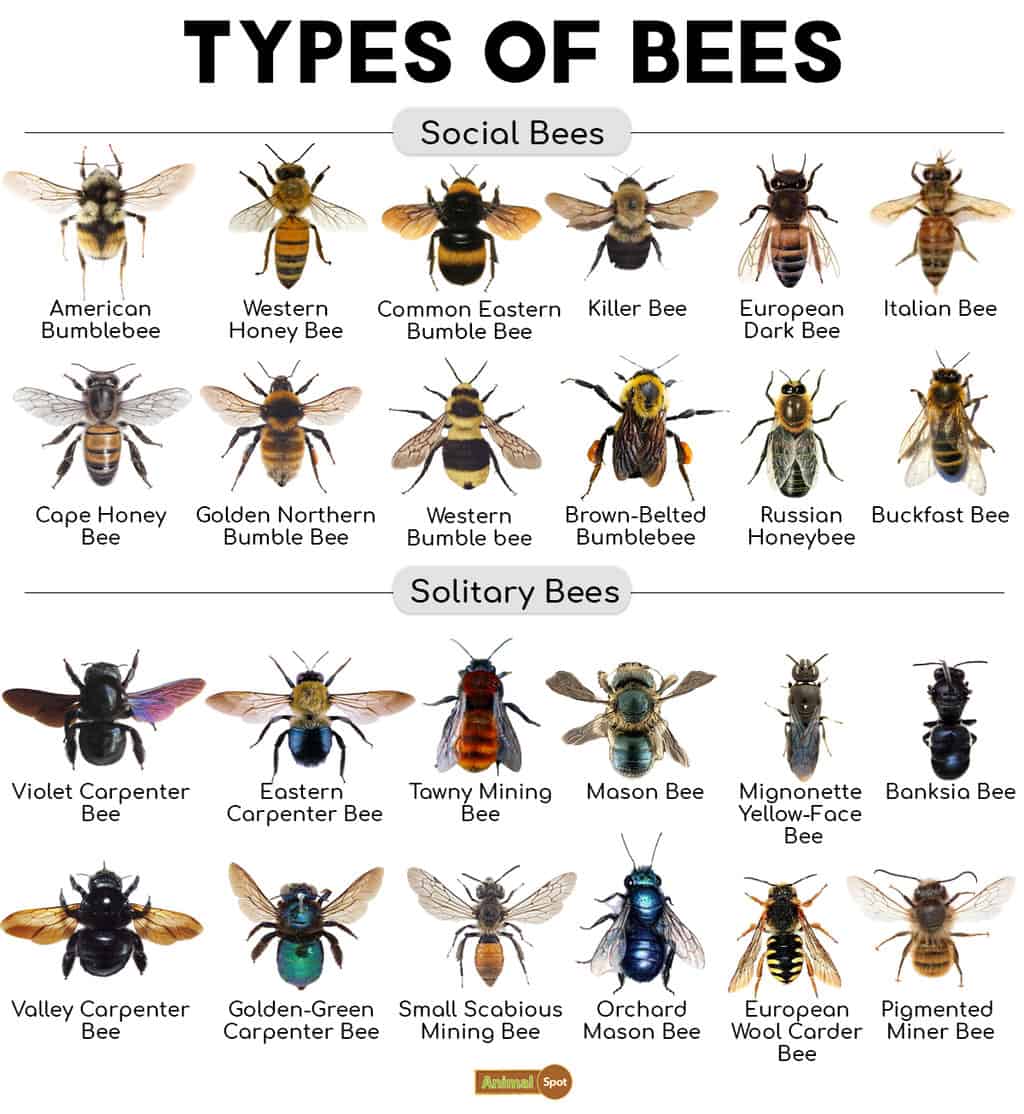
Bees belong to the insect family and can be found in most regions of the world. Commonly, there are two types of bees: Honey Bees and Bumble Bees. Both types of bees are capable of stinging but each has its own unique features.
Female Bee Sting
Female bees are the only ones capable of stinging, as only they possess a stinger. When a female bee stings, the stinger pokes through the victim’s skin, injecting venom. The venom is a combination of acids, alkaloids, and other irritants.
Which Bees Leave Stingers
Honey bees and bumble bees are the only types of bees that leave their stingers behind. When a bee stings, their stinger becomes lodged in the skin. The stinger and venom sac are attached to the bee’s abdomen and when the bee flies away, the stinger and venom sac are pulled from the bee’s body and remain behind in the victim’s skin. This causes the bee to die soon after stinging.
It is important to note that only female bees have stingers, so male bees are not capable of stinging. To avoid being stung, it is important to wear protective clothing, such as a beekeeper’s suit, when handling bees. Additionally, it is important to move slowly and calmly when handling bees to avoid being stung.
How Many Stingers Does a Bee Have?
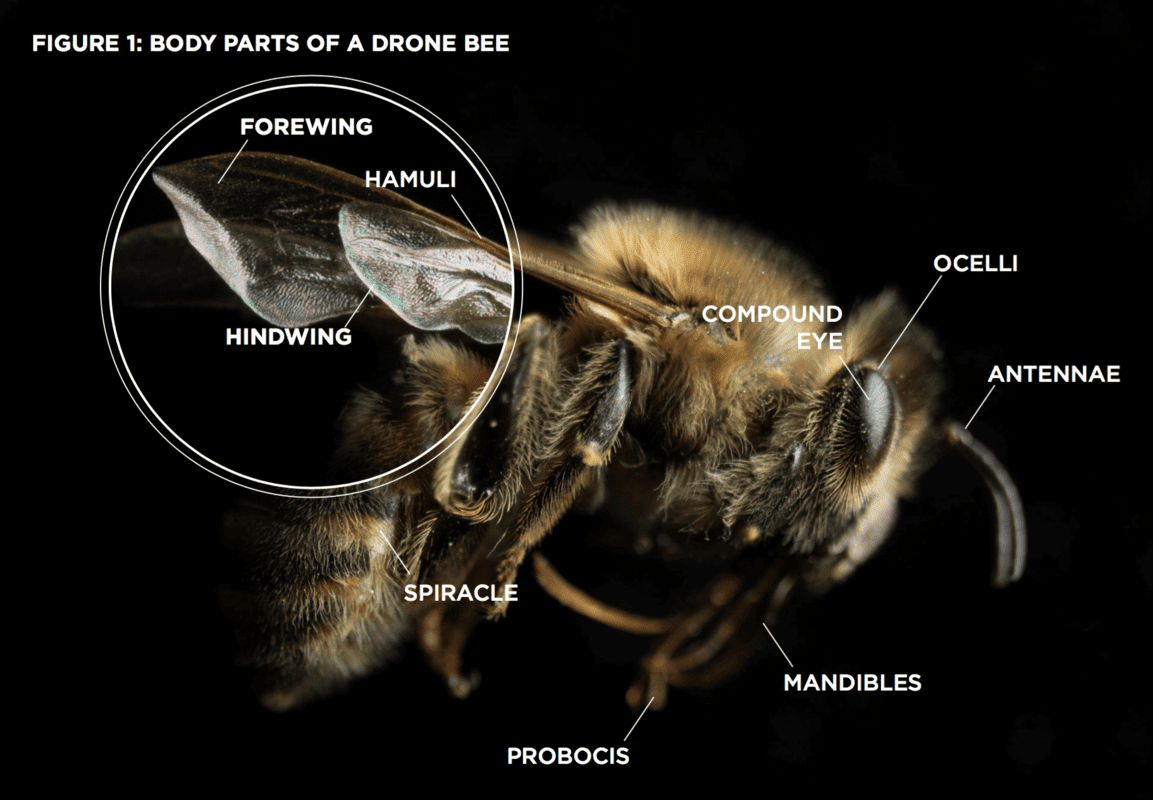
Bees possess a unique body part called a stinger, which is used to defend itself against predators. Bees are equipped with two stingers, but they can only use one of them at a time. The other one is used as a backup in case the first one is lost or damaged. Here is a table with more information about the bee’s stinger:
| Type | Number of Stingers |
|---|---|
| Male bees (drones) | 0 |
| Female bees (queens and workers) | 2 |
Once the bee uses its stinger, it will become detached from its body and the bee will die. Therefore, it is important to handle bees carefully so as to avoid injury from the bee’s stinger.
Which Bees Sting?
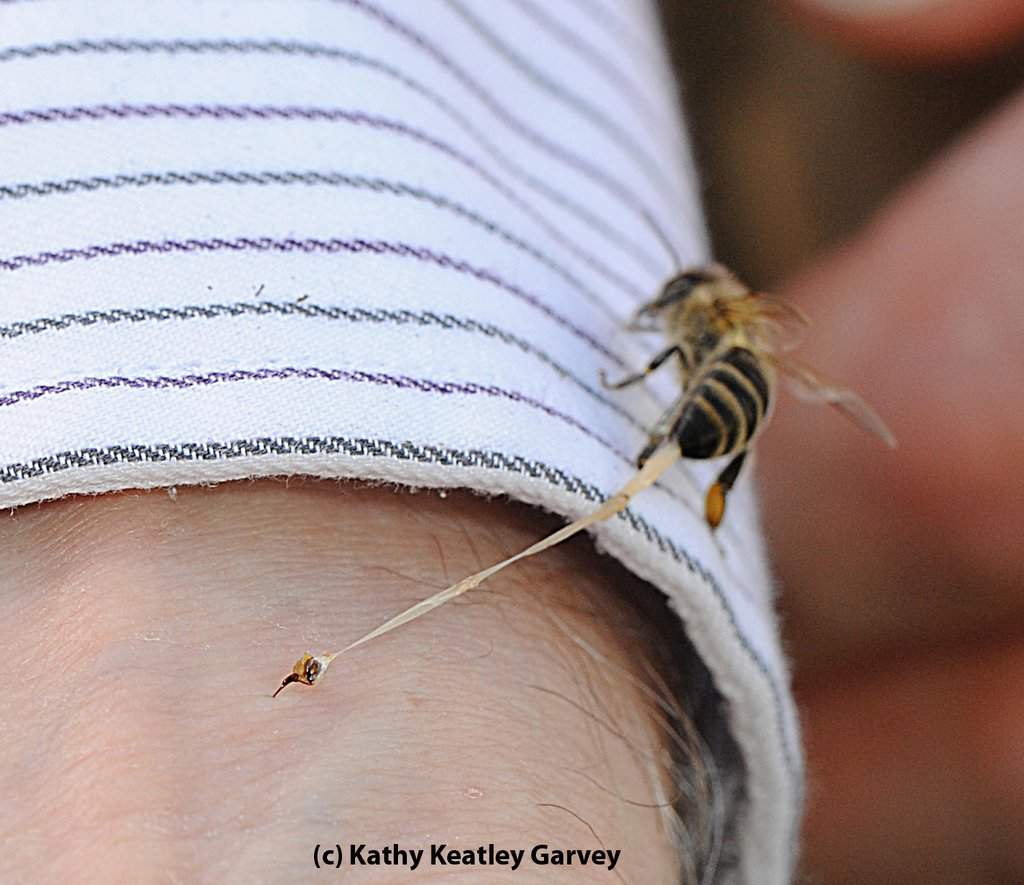
Bees are among the most common insects in the world. They are known for their ability to produce honey and beeswax, but they are also capable of stinging. While it may seem that all bees sting, not all of them do. Certain species of bees are not capable of stinging, while some are.
List of Bees That Sting
- Honey Bees
- Bumble Bees
- Carpenter Bees
- Mason Bees
- Mining Bees
- Sweat Bees
Honey bees are the most well-known stingers. They are the most common type of bee and are found in many parts of the world. They are usually very docile and only sting if they feel threatened.
Bumble bees are larger than honey bees and can be identified by their bright colors. They are social insects and live in colonies. They are also capable of stinging, but they are less likely to do so than honey bees.
Carpenter bees are a type of bee that is generally docile and will only sting if they are disturbed. They are usually black or yellow and are found in North America and Europe.
Mason bees are solitary bees that are found in many parts of the world. They are small and black, and they are not known for stinging.
Mining bees are solitary bees that are found in North America, Europe, and Asia. They are small and black and are not known for stinging.
Sweat bees are found in many parts of the world and are known for their ability to sting. They are small and black and are attracted to sweat, which is why they are called “sweat bees”.
In conclusion, honey bees, bumble bees, carpenter bees, mason bees, mining bees, and sweat bees are all capable of stinging. It is important to be aware of which bees have stingers and to take the necessary precautions to avoid being stung.
What Bees Sting You?
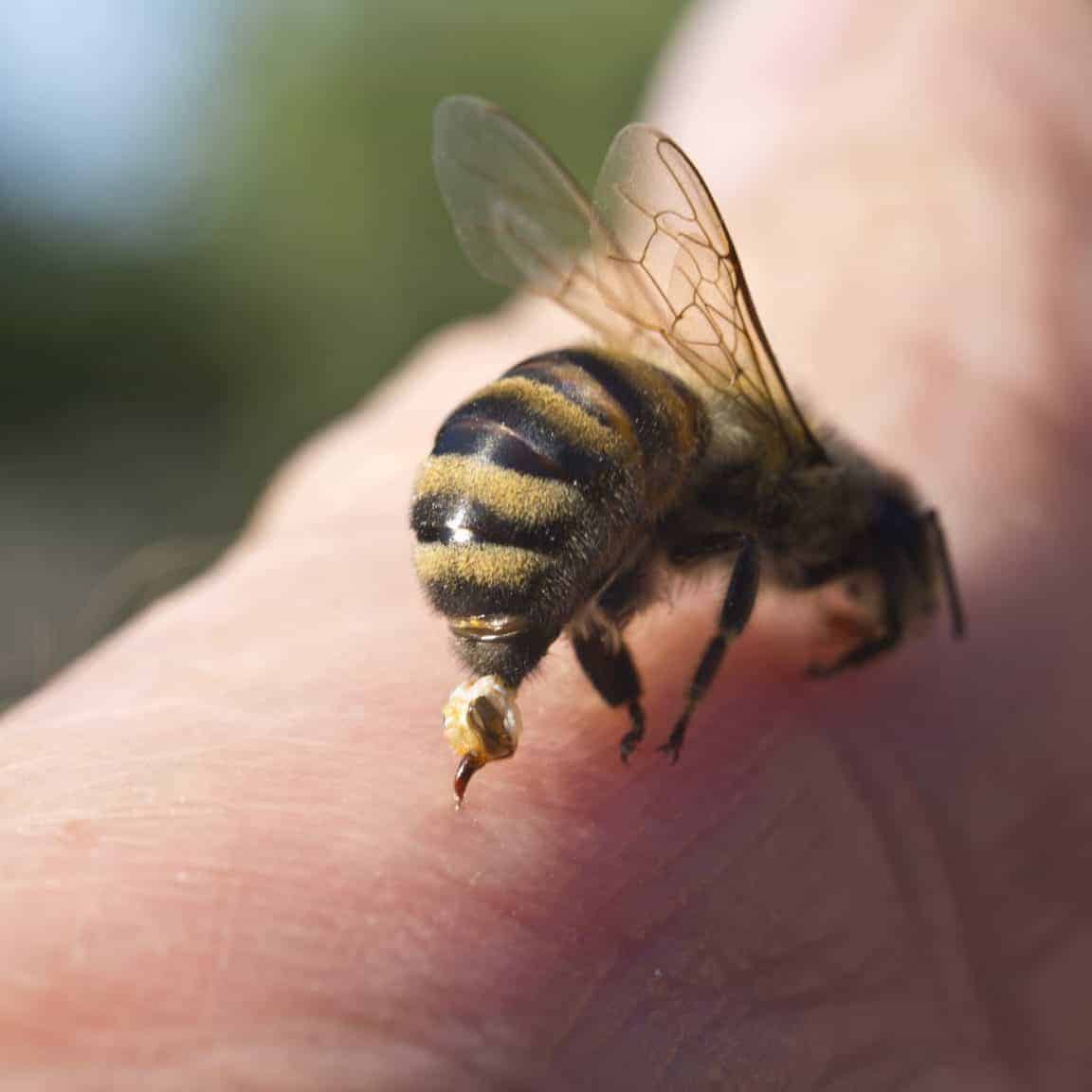
Bee stings occur when a bee, such as a honey bee, defends itself against a perceived threat by injecting venom through its stinger into the skin of its victim. It is important for beekeepers to be aware of which bees can sting and how to handle a bee sting in order to avoid injury.
Bees that are capable of stinging include honey bees, bumble bees, and carpenter bees. Honey bees are the only species of bee that can sting multiple times and leave their stinger in the skin. The other two types of bees can sting only once and then die.
The venom from a bee sting can cause a severe allergic reaction in some people, including anaphylactic shock. It is important to be aware of one’s allergies and to carry an EpiPen or other anti-allergy medication in case of a reaction.
In order to avoid bee stings, beekeepers should wear protective clothing such as a bee suit, veil, and gloves. Additionally, they should avoid swatting at the bees or making sudden movements, as this will agitate them and make them more likely to sting.
If a bee does sting, the stinger should be removed as quickly as possible by gently scraping it off with a fingernail or credit card. The area should then be washed with soap and water, and an ice pack should be applied to reduce swelling. Over-the-counter pain medication may be taken to manage the discomfort.
Beekeepers should be aware of what bees sting and how to handle a bee sting in order to avoid injury. By following the guidelines outlined above, beekeepers can reduce the risk of being stung and can ensure their safety.
How to Handle a Bee Sting
Remain Calm: A bee sting can be frightening, but it is important to remain calm. It is also important to move away from the bee quickly, but do not flail or swat at the bee.
Remove the Stinger: The stinger of a bee is barbed and is designed to lodge in the skin. It is important to remove the stinger as soon as possible to prevent further venom from entering the body. The best way to remove a bee stinger is to scrape it away from the skin with a fingernail or a credit card at a 45-degree angle. Do not use tweezers as this can cause more venom to be released.
Clean the Wound: Once the stinger is removed, clean the area with mild soap and water. Apply a cold compress or an ice pack to reduce swelling and irritation.
Take an Antihistamine: Bee venom contains histamine, a chemical that causes inflammation and swelling. Taking an antihistamine can help reduce the reaction and prevent further swelling.
Seek Medical Attention: If you experience any symptoms of an allergic reaction such as dizziness, difficulty breathing, hives, or swelling in the face, seek medical attention immediately.
Avoiding Injury From Bee Stings
- Wear protective clothing such as a hat, veil, face mask, and gloves when interacting with bees. Keep a bee brush and smoker nearby in case of emergency.
- Avoid sudden movements near bee hives. Allow bees to get used to your presence before attempting to interact with them.
- Know the signs of an impending attack and act quickly. Bees will often give warning signs before attacking, such as buzzing, vibrating their wings, or curling their abdomens.
- Do not swat or crush bees as this will only agitate them further. Instead, calmly brush away any bees that have landed on you.
- If a bee does sting you, remove the stinger quickly and apply an ice pack to the area to reduce swelling. Taking an antihistamine may also help reduce itching and swelling.
- Seek medical attention if you experience any severe reactions to the sting, such as difficulty breathing or swelling in the throat.
Frequently Asked Questions
What areas of the body are most commonly stung by a bee?
- Fingers – Bees often sting on the fingers when a beekeeper is trying to handle the bee.
- Neck – If a beekeeper is wearing a veil that does not cover the neck, bees sometimes sting in this area.
- Head – If a beekeeper is not wearing a veil, then their head is an easy target for a bee sting.
- Eyes – Bees sometimes fly into a beekeeper’s face and sting around the eyes.
- Arms – As a beekeeper reaches into a hive, bees may sting on the arms.
- Legs – If a beekeeper is not wearing long pants, their legs can be a target for stings.
How can I prevent being stung by a bee while beekeeping?
Beekeepers should wear protective clothing such as a bee suit and a bee veil to protect their skin and eyes from bee stings. Additionally, beekeepers should use a smoker to help calm the bees. The smoke released by the smoker masks alarm pheromones, which helps to keep bees calm and less aggressive. When working with the hive, beekeepers should move slowly and speak softly to avoid startling the bees. Lastly, beekeepers should remember to wear light-colored clothing, avoid sweet-smelling lotions, and never swat at bees.
What should I do if I am stung by a bee?
1. Remove the stinger: The first step to take if you are stung by a bee is to remove the stinger as soon as possible. It is important to do this quickly because the longer the stinger remains in the skin, the more venom will be injected. Use a pair of tweezers, a credit card, or your fingernail to gently scrape the stinger out of the skin.
2. Clean the wound: To reduce the risk of infection, it is important to clean the wound with soap and water. Rinse the area with cold water to help reduce the swelling and pain.
3. Apply a cold compress: After cleaning the wound, it is important to apply a cold compress to the area. This will help reduce the pain, swelling, and itching. A cold compress can be made with ice cubes wrapped in a towel or a cold pack.
4. Take an antihistamine: Taking an antihistamine such as Benadryl can help reduce the swelling, itching, and other symptoms associated with a bee sting.
5. Seek medical help: If you are experiencing severe symptoms such as difficulty breathing, swelling of the throat or face, or anaphylaxis, seek medical help immediately.
Are There Any Natural Remedies for Bee Stings?
Baking soda is a natural remedy for bee stings. It may help to neutralize the venom from the sting. To use this remedy, mix a teaspoon of baking soda with a few drops of water to create a paste. Apply the paste to the sting for about 15 minutes. Apple cider vinegar is another natural remedy for bee stings. It can help to reduce pain and swelling. To use this remedy, mix 1 teaspoon of apple cider vinegar with a few drops of water and apply the mixture to the sting. Honey may also help to reduce pain and swelling from a bee sting. To use this remedy, apply a small amount of honey directly to the sting. Leave the honey on the sting for 10-15 minutes.
What are the Risks Associated with Bee Stings?
Bee stings can cause pain, swelling, and itching. In some cases, they can cause an allergic reaction that can be serious and require medical attention. People with bee sting allergies may have difficulty breathing, faint, or even have a life-threatening reaction called anaphylaxis. Other risks associated with bee stings include infection, nerve damage, and a toxic reaction that can affect multiple organs.
Conclusion
Beekeeping is a rewarding and challenging hobby that requires knowledge and safety precautions. In the event that you do get stung, it is important to remain calm and remove the stinger as quickly as possible. Applying ice to the affected area and taking an antihistamine can also help reduce the pain and swelling associated with a bee sting. With the proper safety precautions and knowledge, beekeepers can enjoy their hobby without fear of injury.
